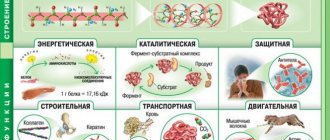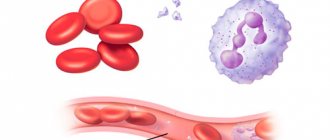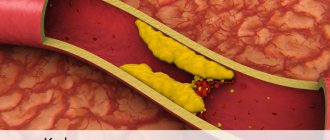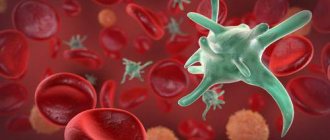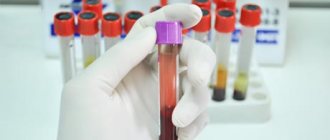Physiological hypoproteinemia
Physiological hypoproteinemia is a process that is often observed in children or in women during pregnancy, often in the third trimester, during lactation, or in people on long-term bed rest.
A possible change in the percentage of protein can be observed with a sharp increase or decrease in the volume of blood that circulates throughout the body. With hydremia (water load, or, as this disease is also called “water poisoning”), hypoproteinemia can occur, while with dehydration/dehydration, hyperproteinemia can develop.
Absolute hypoproteinemia can be observed in the following cases:
- Deficiency of protein intake in the body due to frequent malnutrition and starvation, narrowing of the esophagus or disruption of the functioning of the gastrointestinal tract.
- Inflammatory diseases that occur in the intestines and lead to deterioration in the digestion and absorption of proteins.
- When the activity and functioning of the liver is disrupted, resulting in cirrhosis and hepatitis, toxic lesions and carcinomas, and, even worse, metastasis of tumors to the liver.
- Acute and chronic bleeding and extensive burns, frequent kidney diseases, nephrotic syndrome
- Enhanced catabolism or, in other words, protein breakdown due to prolonged hyperthermia or thermal burns and thyrotoxicosis
- Physical activity and cancer
- Redistribution of proteins, namely, their release from blood vessels and the creation of transudates and exudates.
The opposite phenomenon, absolute hyperproteinemia, can be observed less frequently and usually manifests itself under the following conditions:
- Infectious and chronic inflammatory processes in the body
- Autoimmune pathologies such as lupus erythematosus and rheumatism
- Oncological diseases with overproduction of a number of pathological proteins, namely paraproteinemia.
Consequences of Low Protein Levels
The consequences of a lack of protein in the body are very sad: children’s growth and development slows down, and adults suffer from liver failure, all kinds of hormonal disorders, vitamin deficiency, as well as anemia and disruption of the reproductive system.
With long-term protein deficiency, two types of protein deficiency can be observed:
- Marasmus is the highest degree of physical exhaustion, which is most often observed in babies in the first year of life who do not receive enough nutrition. With marasmus, the child’s body weight drops significantly, it is less than 60% of the proper weight, the skin becomes wrinkled and lethargic, the subcutaneous layer of fat disappears, and physical and neuropsychic development is disrupted. The child has a lack of appetite and interest in everything that happens.
- Kwashiorkor is a disease that affects adults and children over one year of age. The decrease in total body weight is about 20-40%, swelling is observed throughout the body, especially in the abdominal area. The skin becomes very rough and may develop rashes or scales. The psyche is greatly depressed, contact with the outside world is lost.
Causes of high protein in the blood
Protein is an important component necessary for the functioning of the body. Its different types are involved in all biochemical processes. They take part in immune defense and blood clotting, transport various substances (lipids, minerals, pigments, hormones, drugs) to organs and tissues, maintain pH balance in the blood, keep blood elements in suspension, and ensure its viscosity and fluidity.
All proteins contained in the blood and differing in properties, structure and purpose are called “total protein”. Serum contains globulins as well as albumins. In addition, there is also fibrinogen in plasma, so total plasma protein is higher than serum protein. A blood test allows you to determine both the total content and the concentration of individual fractions. If serum protein is elevated, it is referred to as hyperproteinemia.
Norm
Different ages have their own protein concentration levels:
- from 43 to 68 g/liter – for newborns;
- from 48 to 72 – for children under 1 year;
- from 51 to 75 – for children from 1 to 4 years old;
- from 52 to 78 – for children from 5 to 7 years old;
- from 58 to 78 – for children from 8 to 15;
- from 65 to 80 – for adults;
- from 62 to 81 – for people over 60 years old.
Based on its general level, the degree of disturbance of protein metabolism in the body is assessed. Determining its concentration is necessary when diagnosing cancer, kidney and liver diseases, severe burns, and nutritional disorders. Elevated protein indicates disturbances in the functioning of the body. It is impossible to determine the cause based on this indicator alone; additional research must be carried out.
Reasons for the increase
Hyperproteinemia can be absolute and relative.
An absolute increase is quite rare. It is caused by the production of pathological proteins, increased synthesis of immunoglobulins or intensive production of proteins during the acute period of the disease. In this case, the reasons for the increased protein may be the following:
- Chronic polyarthritis.
- Hodgkin's disease.
- Cirrhosis of the liver.
- Chronic hepatitis.
- Chronic and acute infectious diseases.
- Blood poisoning.
- Autoimmune diseases (sarcoidosis, lupus erythematosus, rheumatoid arthritis).
- A particularly high level of protein is observed in paraproteinemic hemoblastoses: Waldenström's disease, myeloma and others. Its concentration can reach about 120-160 g/liter.
Absolute hyperproteinemia is observed in many serious diseases, including infectious, oncological, autoimmune and others
. As for the relative increase in protein, it is due to the fact that the blood becomes thicker due to dehydration of the body. The reasons for this condition may be the following:
- Intestinal obstruction.
- Diabetes insipidus.
- Severe burns.
- Severe injuries.
- Acute bleeding.
- Profuse diarrhea.
- Severe vomiting.
- Cholera.
- Generalized peritonitis.
- Increased sweating.
- Diabetic ketoacidosis.
- Chronic nephritis.
Protein concentrations may also increase in healthy people. In these cases, it rises for a short time and quickly returns to normal. False hyperproteinemia is observed:
- when applying a tourniquet to the forearm vein during blood sampling;
- during physical activity;
- when suddenly rising from bed, that is, changing a horizontal position to a vertical one.
Conclusion
Total protein in a biochemical blood test is not of particular diagnostic value. Any deviations from the norm require additional research. If an increased level of total protein is detected in the blood, you need to find out why this happened. In most cases, this is a signal of problems in the body. As a rule, its high level cannot be the norm. It is necessary to quickly make an appointment with a doctor for examination, diagnosis and treatment, since this condition can pose a threat to health and life.
Blood protein levels
The biochemical analysis protocol indicates the concentrations of three types of protein - total, albumin, C-reactive. It is these types that are most significant in terms of a general assessment of the state of the body. Reference indicators depend on age. They are the same for representatives of different sexes.
Table - Total protein norms by age
| Population category | Physiological value, g/l |
| Newborns up to a month | 46‒68 |
| Up to a year | 58‒73 |
| Up to 14 years old | 63‒82 |
| Adults | 64‒83 |
| Elderly | 60‒81 |
The second result is usually the albumin level. Norms are also different for patients of different ages and do not depend on gender.
Table - Norms for albumin content in blood
| Population category | Physiological value, g/l |
| Newborns up to a month | 35‒44 |
| Up to a year | 35‒49 |
| Up to 14 years old | 35‒55 |
| Adults | 33‒50 |
C-reactive protein should not be detected in children and adolescents under 14 years of age. In this case, the word “negative” is indicated in the analysis or put a dash. For adults, the presence of up to 0.5 mg/l is allowed.
Protein concentration is studied using the biuret or microbiuret method. The method is based on the property of proteins to react with copper sulfate in an alkaline environment to form insoluble violet complexes. The result is determined by the saturation of the shade of the resulting solution using a photometer.
A biochemical blood test is prescribed for diagnostic purposes if a person has health complaints or obvious signs of a developing disease. Doctors recommend taking the test once a year for preventive purposes. It is the change in protein concentration that may indicate the beginning of a pathological process or the emergence of a tumor.
Preparing for the study
There is no special training for donating blood at the OBC. When prescribing an analysis, you should adhere to the following recommendations:
- Blood must be donated on an empty stomach. The last meal should take place 8–12 hours before visiting the laboratory;
- the day before donating blood, you need to reduce the amount of protein food in your diet, and also give up fatty, spicy and fried foods/foods;
- It is advisable to stop taking any alcohol-containing drinks three days before the study;
- you must cancel your visit to the gym or swimming pool three days before the test;
- Before entering the office, you need to sit for about 15 minutes and calm down;
- You need to donate blood between 7 and 11 am, since the reference values are calculated specifically for this period;
- If a person is taking any medications, it is advisable to stop taking them. If this is not possible, then you will need to notify the attending physician;
- Before donating blood for testing, you should not attend any procedures or undergo physical examinations, such as scans.
Failure to follow recommendations may distort the study results.
What is total protein
By the term “total blood protein (total protein),” doctors mean the totality of all protein substances contained in plasma. There are a lot of them, and they perform a wide variety of functions:
Participate in blood clotting. They maintain plasma oncotic pressure, which is extremely important for the formation of urine and tissue fluid. A decrease in protein concentration leads to a decrease in this pressure and the development of edema. Maintains blood pH at the proper level. Transport substances from one organ to another
As an example, transport of cholesterol, bilirubin, hormones. Participate in immune processes (antibodies that protect the human body from infections are immunoglobulins, that is, proteins). They create a “protein reserve”. If there is insufficient intake of protein substances from food, blood proteins break down into amino acids, which are necessary for the formation of cells of the heart muscle, brain and other extremely important organs. They regulate many physiological processes occurring in the body. Most enzymes, hormones and other biologically active substances have a protein structure.
Protein synthesis mainly occurs in the liver and immune system. Therefore, any pathological processes in these organs are reflected in protein metabolism. The total amount of protein in the blood depends on the balance of the processes of formation and breakdown of two main protein fractions - albumins and globulins.
What does a decrease in the concentration of total protein in the blood serum indicate?
Reduced levels of total protein in the blood are called hypoproteinemia. This condition can be observed during pathological processes, for example, such as:
- parenchymal hepatitis
- chronic bleeding
- anemia
- loss of protein in urine in kidney disease
- diets, fasting, insufficient consumption of protein foods
- increased protein breakdown associated with metabolic disorders
- intoxications of various types
- fever.
Special mention should be made of physiological hypoproteinemia, i.e. conditions not associated with the course of pathological processes (disease). A decrease in total protein in the blood can be observed:
- in the last trimester of pregnancy
- during lactation
- during prolonged heavy loads, for example when preparing athletes for competitions
- with prolonged physical inactivity, for example, in bedridden patients
Symptomatically, a decrease in the concentration of total protein in the blood can be expressed by the appearance of tissue edema. This symptom usually appears with a significant decrease in total protein, below 50 g/l.
Why is protein needed in the blood?
Proteins in the blood and their functions are necessary for a person to function normally. For this reason, when the protein detected in a blood test is not normal, this indicates the presence of certain pathological processes
In order to understand the importance of protein in the body, you need to answer the question: what is it? Protein is the main building material of tissues and organs. In the body it is necessary for the following processes:
- Ensuring normal blood flow.
- Participation in the functioning of the immune system.
- Normal functioning of the muscular system.
- Immune function - protein forms antibodies;
- Ensuring normal blood clotting.
- Complete transportation of nutrients in the body.
- Preservation of formed components of blood plasma.
- Complete renewal of tissue cells.
- Maintaining a normal volume of fluid to the blood.
- Reserve accumulation of amino acids.
- Maintaining normal iron levels in the blood.
- Maintaining sufficient blood volume in capillaries and small vessels.
Proteins perform many functions in the human body, which shows their indispensability
It is very important to know how much protein should be contained in the blood and promptly identify deviations in their amount from the norm
Types of hyperproteinemia (increased protein)
Total protein in the blood is increased when provoking factors, which can be physiological or pathological, act on the human body. The first include: nutrition with a predominance of protein products of animal and plant origin, after intense physical activity. As a rule, such an increase in total protein is short-term and not significant.
Hyperproteinemia of infectious origin can also be classified as a physiological increase, since it acts as a kind of defense for the body. This is a variant of acute inflammation or dehydration, fever of unknown origin. The increase in protein in this case is insignificant; its essence is the emergency synthesis of globulins, which are components of the immune system.
If hyperproteinemia is pathological, the main provoking factors can be considered:
- dysfunction of the urinary system with renal failure;
- malignant tumors;
- multiple myeloma.
There is another classification of hyperproteinemia: primary and secondary. Primary diseases include diseases of the blood system of any nature, secondary diseases include diseases of other organs and systems.
Separately, false increases in protein are identified due to errors in the preparation and conduct of the analysis.
If elevated levels are detected in a child
In order to confidently determine the cause, it is necessary to undergo an examination. The only thing you shouldn't do is panic
Pay attention to the general condition of the child - whether there is lethargy or fever. When there are no alarming symptoms, the baby continues to lead an active lifestyle, there is no point in worrying in advance
Unreliability of results
In some cases, exceeding the norm is explained simply by the error of the results.
Children by nature are very mobile, and the reliability of test results depends on many factors. Before starting the procedure, you should not run or jump a lot - increased physical activity can distort protein levels. After its completion, you should also not jump up sharply, you need to lie down or sit quietly for a while. If you do not adhere to these rules, you may receive information that is not entirely true. In such cases, a repeat blood test is prescribed.
Dehydration
When a child loses a lot of fluid, the blood becomes more viscous and the production of protein molecules begins. This happens with blood loss and intestinal pathologies. Sometimes the reason may be intoxication of the body due to poisoning with low-quality products, overheating in the sun, or toxic fumes from paints and varnishes entering the lungs. Poisoning is usually accompanied by upset stool and profuse vomiting.
The reason for the imbalance of water balance can be the most common - intense physical activity. Children move a lot - run, jump, play outdoor games. If a child also plays sports or dances, his body doubles the need to replenish fluid loss.
Pathological processes
There are also not the most harmless reasons for increasing the level of total protein in children. When it comes to illness, this is a sure signal of the development of an inflammatory process.
What is protein and its role in the body
An analysis of total blood protein shows the concentration of protein molecules in the plasma, which makes it possible to determine whether amino acid metabolism is normal, as well as to evaluate the functioning of recovery functions. Proteins are the basic building material for all cells of the body; if enough of them are supplied, then all organ systems function normally.
There are hundreds of types of protein in the human body, but they are all synthesized in the liver
For these reasons, the health of this organ is very important; a properly functioning liver is actually the key to healthy protein metabolism
During the analysis of total protein, special attention is paid to three main components, these are:
- Albumen. Low molecular weight protein is the main building element; the production of new cells and maintaining the integrity of existing cells depends on it. This is the main component of total protein (more than 50%).
- Globulin. A large molecular protein, the body’s ability to synthesize antibodies and proteins responsible for maintaining immunity and fighting harmful bacteria and viruses depends on these substances. This also includes inflammatory mediators, c-reactive protein, etc.
- Fibriogen. High molecular weight protein that directly affects blood clotting. If it is in excess, the risk of blood clots increases significantly. Fibriogens are the smallest group in the overall protein composition.
Proteins that make up the blood play an important role; the viability of the body depends on it. The most important functions are as follows:
- transfer of oxygen, trace elements and nutrients;
- removal of metabolic products from organs and tissues;
- maintaining immunity and helping to fight viral diseases; recovery from injuries (scratches, wounds, fractures, etc.);
- maintaining normal blood pressure by regulating blood viscosity and clotting;
- accumulation of essential amino acids.
Any deviations from the norm, more or less, are symptoms of disease. In the vast majority of cases, bringing protein levels back to normal requires treatment of the disease that caused the imbalance.
What does protein in the blood show?
The state of amino acid metabolism can be determined by the protein content in the blood. Protein, in fact, is an indicator of the body’s regenerative abilities and its resistance to adverse conditions, because proteins are the “building blocks” of cells and tissues, giving them elasticity and strength.
Total protein has 3 fractions:
- Albumin. They make up the largest portion of proteins. These low molecular weight proteins provide the body with material to maintain the structure and create cells.
- Globulins. They occupy about 45% of all proteins. These are large molecular proteins. Allows the synthesis of immune proteins.
- Fibrinogen. Occupies the smallest part of proteins. It is a high molecular weight protein. Responsible for blood clotting.
We must remember! Protein is the main building material for cells and tissues of the body.
Different protein fractions are responsible for important tasks: cell synthesis, maintaining immunity and blood clotting.
In addition, proteins deliver nutrients and medications to necessary organs. Proteins also control the filling of the vascular bed and the balance of red blood cells, platelets and leukocytes. Protein is responsible for blood properties such as fluidity and viscosity. So it directly affects hemostasis, affecting the functioning of blood vessels and the heart.
Reasons for increasing protein
Any deviation from normal values indicates the presence of various diseases, with lower values being much more common. An increase in protein indicates more specific diseases. It is divided into three types:
- absolute;
- relative;
- a marker of physiological abnormalities in the body.
An absolute increase is most often a consequence of:
- oncology;
- the presence of severe acute infections;
- inflammatory processes;
- autoimmune disorders.
A relative increase in protein concentration indicates:
- intestinal infections;
- toxicosis;
- the presence of severe bleeding (internal ruptures, injuries, etc.);
- overdose of drugs and corticosteroids;
- intestinal obstruction.
The third type includes natural factors that increase protein. This can be an abundant consumption of protein foods, vigorous physical activity (playing strenuous sports, etc.). Breastfeeding a baby can also cause an increase in proteins in the blood. Even a sudden rise from a lying position can cause distortion of the analysis results.
Taking hormonal and steroid drugs also affects the results of the analysis, distorting them upward
Therefore, in order to make an accurate diagnosis, it is important to take into account what medications the patient has taken recently, his type of activity, and also collect a complete medical history. This is necessary, since excess protein only indicates the presence of pathology, but without additional examinations it is impossible to determine the exact cause
What should you do before taking the tests?
Blood biochemistry tests can be taken in a private laboratory at your own request or upon the direction of a doctor. In both cases, no specific preparation is required before donating blood, except for standard measures. Blood should be donated in the morning on an empty stomach; ideally, the last meal should be 8-12 hours before.
In order for the results to be as accurate as possible, it is not recommended to eat a lot of protein foods the day before your appointment. You should not drink too much water, much less alcohol, and you should also avoid active physical activity at least a day before the test. Otherwise the results will be incorrect.
How to reduce protein - recommendations from doctors
First, the doctor must determine the source that caused the increase in protein. If the factors are diseases or chronic pathologies, then you should not self-medicate. The doctor will prescribe the necessary medications and prescribe dietary nutrition. The patient must strictly follow the recommended diet and periodically undergo a biochemical blood test to check protein concentration. The check will make sure that the treatment is prescribed correctly; you need to continue the treatment therapy.
Before using traditional medicine, it is important to consult with your doctor about the safety of herbs and decoctions to avoid serious complications. Traditional therapy is an auxiliary treatment; first of all, you need to take the medications prescribed by the doctor, and if he allows, combine them with herbal medicine.
If the increase in protein was influenced not by pathological reasons, but by a person’s lifestyle, then for treatment it will be enough to follow three tips:
- Set aside more time for rest. Avoid strong emotional and physical stress. Everything should be in moderation. You should rest both passively and actively.
- Make sure your diet is healthy and balanced. In addition to dairy products, sausages, meat products, fish, seafood and eggs, it is important that your daily diet includes fresh fruits, berries and vegetables. Protein-rich foods can cause a number of serious diseases, such as gout and obesity.
- Get tested in a timely manner, donate blood and monitor protein levels. This will help detect diseases at the initial stage of development and treat them without complications for the body.
Proper nutrition, a healthy lifestyle, giving up bad habits and moderate exercise are the key to your health!
So, if you donate blood for a biochemical analysis and do not conduct a full examination in the future, then an increased protein level will not be able to indicate a serious cause. Going beyond normal limits does not always indicate the development of pathology and inflammation; this can occur during pregnancy and other physiological changes in the body. Timely diagnosis and treatment will help avoid many negative consequences and restore protein levels.
Protein in the blood during pregnancy
Hyperproteinemia can also be observed in pregnant women.
Total protein and its concentration are considered one of the important indicators of health. It is responsible for the metabolic process and maintaining immunity at the proper level, so a pregnant woman needs to take all tests on time to keep the situation under control. Protein is the basis of connective tissue, which is responsible for the strength of many elements of the body. When the expectant mother's protein molecules are normal, the organs and systems work smoothly.
Why are the indicators increased?
If the reasons are not related to pregnancy, then this can occur when water balance is disturbed, exacerbation of chronic diseases, or the development of inflammatory processes. Sometimes this is due to intoxication of the body.
How does pregnancy affect protein levels?
Its indicators always cause increased interest among doctors monitoring the condition of a pregnant woman. In the expectant mother, the concentration of total protein sometimes increases. This indicates kidney disease or dehydration.
Exceeding the norm is especially common at the end of the term, when the child is about to be born. Then many pregnant women experience diarrhea, which leads to fluid loss and an increase in the level of protein molecules in the blood. For safety reasons, it is recommended to monitor all particularly important indicators based on test results throughout the period.
If the blood becomes more viscous under the influence of pathological changes, this will prevent the saturation of the amniotic fluid with useful components. When the baby has a severe lack of nutrients, he may die.
If you detect an increased level of total protein in the blood, be sure to consult a doctor, then the development of the pathology can be stopped at an earlier date and there will be less danger to health.
How to increase protein in the blood - medicine and folk recipes to protect your health
proteins in the blood is one of the indicators of biochemical research. Peptide compounds take part in many vital processes. Their quantitative content in the blood shows how protein metabolism occurs in the human body. Biochemical analysis of protein in the blood is used to diagnose diseases.
Attention! Some medications lead to an increase or decrease in the level of proteins in the blood. You must inform your doctor about this.
Why do you need protein?
The human body consists of 62% water, 16% protein, 16% fat, 6% minerals, about 1% carbohydrates and other nutrients. The most important proteins in the body are globulins and albumin. Albumin is a common peptide. When they talk about low protein in the blood, they mean albumin.
Given the many conditions that cause hypoalbuminemia, it is important to maintain peptide levels at optimal levels. Another important protein in the body, called globulin, is part of the immune system.
Causes of low protein concentration in the blood
A common cause of low levels of peptide compounds in the blood is malnutrition. Insufficient dietary protein intake results in a life-threatening condition called Kwashiorkor. Found in poor regions. However, it can be easily cured with a proper meal plan and a high level of protein intake.
Important! Often, in women in the first trimester of pregnancy, protein in the blood decreases in a short period of time. In this case, you don’t need to think about how to increase protein in the blood, because this condition is considered a physiological norm.
https://www.youtube.com/watch?v=0B_DxnGGyEA
Most proteins, including hormones, enzymes, and globulins, are synthesized in the liver. Pathological conditions such as cirrhosis and hepatitis damage the liver and lead to a decrease in the amount of total protein in the blood. This condition leads to edema, ascites and hemorrhage.
Most waste is disposed of through the kidneys. They have a glomerular membrane that selectively secretes fluid while storing proteins and electrolytes in the body.
In any setting where the membrane is damaged, the body loses protein through nonselective excretion, resulting in hypoalbuminemia. Kidney diseases include glomerulonephritis and nephrotic syndrome, which causes swelling.
Albumin levels in urine are measured. When the loss of peptides exceeds 30 mg/day, edema forms.
If the body is unable to absorb nutrients, this leads to protein deficiency. Food passes through the digestive system, but the body is unable to break down enzymes, resulting in a lack of sugar, protein and fat. One of the diseases that lead to malabsorption is Celiac disease.
How to increase protein in the blood?
Muscles and the body need proteins to efficiently use energy. During digestion, the human body breaks down peptide compounds into amino acids. Each hormone that affects human metabolism has a peptide structure. Without protein compounds, hormone synthesis is impossible. Hypoalbunemia or hypoglobulinemia is manifested by a certain symptom complex.
Symptoms of low levels of peptides in the blood:
- Chronic fatigue syndrome.
- Edema.
- Weakness.
- Depressive states.
- Brittle nails and hair.
- Dryness of the epidermis.
How to increase protein in the body? The body needs about 8 grams of protein per kilogram. Divide your body weight by 2.2 and multiply by 0.8 to calculate your protein needs. Eat foods rich in protein: fish, red meat, chicken, legumes and nuts.
Avoid alcohol and other substances that cause liver damage and protein deficiency. If you have problems with the liver and kidneys, you need to undergo examination and take medications.
Some diseases affect the body by causing protein loss. This is an oncology that uses up the body's nutrients, leading to protein loss and causing cachexia. Hyperthyroidism leads to increased metabolism and low albumin.
Advice! Chemotherapy, previous surgery, and certain medications are the reasons why the concentration of albumin in the blood quickly decreases. Before or after performing the above procedures, you should consult your doctor.
How to increase protein in the blood using folk remedies?
The question often arises: how to increase protein in the blood using folk remedies? How to increase protein levels in the blood depends on age.
Adults at home need to dilute their diet with beef and chicken. Increase the number of foods that can raise protein in the blood - eggs, celery or vegetables.
Add dairy products to your child, for example: rolled oatmeal or semolina porridge, yoghurt or kefir.
Men have a greater daily protein requirement than women. Therefore, they need to consume more meat and other foods containing a natural source of peptide compounds.
Hypoalbunimenia is treated with corn grains. Five tablespoons of grains are poured into 0.5 liters of water and cooked over low heat for 20 minutes. After they become soft, strain the broth and drink for 2 to 7 days. Other foods to raise blood protein:
- Seaweed.
- Broccoli.
- Spinach.
- Pork.
- Rye bread.
Other methods to increase total protein in the blood:
- Limiting the intake of drugs, protease inhibitors.
- Getting rid of infectious diseases of the gastrointestinal tract.
- Reducing the number of refined foods in the diet.
- Reduce consumption of saturated fats, carbonated drinks and fried foods.
Many diseases affect the level of albumin and globulin in human blood. Therefore, in order not to think about how to increase protein, it is necessary to undergo a timely examination and treat existing disorders.
Loading…
Source: https://dlja-pohudenija.ru/serdcze/analiz-krovi/kak-povyshayut-belok-v-krovi-narodnymi-i-mediczinskimi-sredstvami-prichiny-snizheniya-pokazatelej

